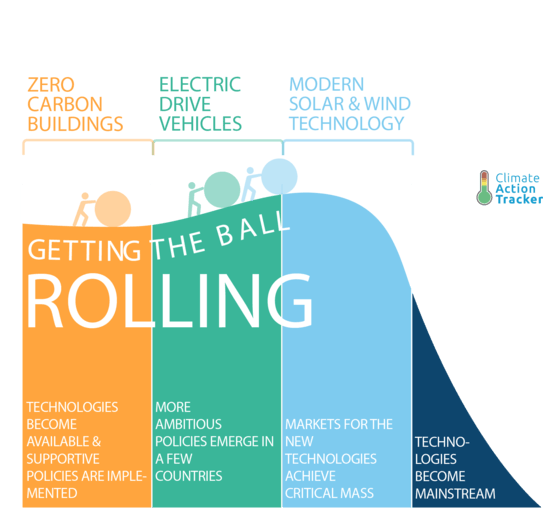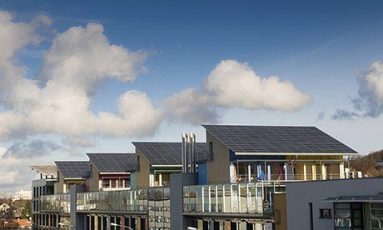Renewable energy on its way
The most progressive field in the power sector is renewable energy. Here, just three countries – Denmark, Germany and Spain – were able to show the way and start an international shift.
All three introduced strong policy packages for wind and solar that provided clear signals to investors and developers to invest in these new technologies. Renewable energy targets and financial support schemes, such as feed-in tariffs, were central to them.
 By 2015, 146 countries had implemented such support schemes. The United Kingdom, Italy and China, along with the US states of Texas and California, pushed bulk manufacturing of solar technology even further and provided the kinds of economies of scale that led to this massive increase in renewable capacity globally.
By 2015, 146 countries had implemented such support schemes. The United Kingdom, Italy and China, along with the US states of Texas and California, pushed bulk manufacturing of solar technology even further and provided the kinds of economies of scale that led to this massive increase in renewable capacity globally.
Between 2006 and 2015, global wind power capacity increased by 600%, and solar energy capacity increased by 3,500%. Solar is projected to become the cheapest energy generation source by 2030 in most countries. In some regions, renewables are already competitive with fossil fuels.
Information released by the United Nations Environmental Programme and Bloomberg New Energy Finance confirms that, in 2016, the rate of renewable take-up rose yet again, with clean energy providing 55% of all new electricity generation capacity added globally. This is the first time there was more new renewable capacity than coal.
Investment in renewables doubled that of investment in fossil fuels. Yet clean power investment dropped 23% from 2015, largely because of falling prices.
To meet the goals of the Paris Agreement, we need to fully decarbonise the global energy system by mid-century. That means the historic trends in the energy sector – 25% to 30% annual growth in renewables – must continue for the next five to ten years. This will require additional policies and incentives, from increased flexibility in the energy system to new regulatory and market approaches.
Electric vehicles poised to take off
A similar trend is beginning to transform the transportation sector. In 2016, more than one million electric vehicles were sold, and new sales continue to exceed projections.
The research tells us that it took only a few players to kick off this trend: Norway, the Netherlands, California and, more recently, China.
Their policies focused on targets for increasing the share of electric vehicles for sale and on the road, campaigns to promote behavioural change, infrastructure investment, and research and development.
Though, to date, it lags behind the renewable power sector, the electric vehicle market is poised to see a similar boom. Current sales numbers are impressive, but we are still far from seeing a transportation transformation that would allow us to meet the Paris Agreement targets.
For the world to meet the upper limit of 2°C set in Paris, half of all light-duty vehicles on the road would need to be electric by 2050. To reach the 1.5°C target, nearly all vehicles on the road need to be electric drive – and no cars with internal-combustion engines should be sold after roughly 2035.
To get us going down that path, more governments around the world would need to introduce the same strict policies as those adopted by Norway and The Netherlands.
Buildings come in last
The third sector we examined is buildings. Though higher energy efficiency standards in appliances are really starting to curb emissions, emissions from heating and cooling buildings have been much more difficult to phase out.
There are proven technological solutions that can result in new, zero-carbon buildings. If designed correctly, these constructions are cost-effective over their lifetime and can improve quality of life.

In Europe and elsewhere, there are some good initial policies on new building standards that make new constructions more environmentally friendly, and some EU states – the United Kingdom, France and the Netherlands among them – are also beginning to mandate that older buildings be retrofitted. Still, the rate of retrofitting falls well short of what is required to substantially drop building emissions.
Innovative financial mechanisms to increase the rate of retrofitting buildings, along with good examples of building codes for new constructions, would go a long way to drive adoption of these technologies. The more governments work together sharing policy successes, the bigger the global transformation. With collaboration, we can meet that 1.5°C goal.
Source: WEforum. Read full report here.
23 May, 2017

